Colorism: How Skin Color Affects Our Whole Lives
When we meet someone for the first time, even before we smile, even before we shake hands, even before we can comprehend the color of their hair, what’s the first thing we notice?
Color. Of the skin.
And based on this assessment, we behave a certain way unconsciously. We see a white woman and we are comfortable. We see a black man and we tend to protect ourselves.
I see an Indian aunty, and I’d grab my girlfriend’s hand and run and hide.
Colorism is all around us. It persists in every continent.
How Did We Get Here?
In 1712, Willie Lynch, a British slave owner in the West Indies, gave a speech on the bank of James River in the colony of Virginia. He was invited to teach his methods of enslavement to other slave owners. One method was to turn colors and shades against each other. How?
Create a hierarchical structure based on skin color with white at the top, brown in the middle, and black at the bottom. Place yourself at the top. Control the few at the top of the hierarchy, who proudly enforce the hierarchical structure by oppressing everyone below them. Is this why it’s easy for brown people to hate black people?
Discrimination based on skin color existed before colonialism. It exists in our psyche and shows in our behaviors. Pre-colonial Indonesian women used plant-based skin treatment to make their complexion pale. Indian folk songs praised women for their beauty when they’re “the color of butter” (Indian butter is white). North African writer Ibn Battuta described “the most perfect of women in beauty” as “pure, white, and fat.”
Colonialism understood this issue and weaponized it against us by taking away our power through subtle repeated messaging reinforcing the discrimination. After decades of experiencing colonialism, in the 1940’s, psychologists Kenneth and Mamie Clark conducted an experiment where children between 3 and 7 were shown light-skinned and dark-skinned dolls and asked them which they preferred. A majority of the children preferred the white doll and assigned positive characteristics to it. The Clarks concluded that “prejudice, discrimination, and segregation” created a feeling of inferiority among African-American children and damaged their self-esteem.

What happens to us under these scenarios? We end up hating our bodies. Our bodies are a vehicle for our soul. Each body is a 400-HP Ferrari, however, we perceive them to be a 1994 Toyota Corolla with 400,000 miles on it. We hate it for its size, we hate it for its shape, and we hate it for its color.
Coming from this space, how can we ever live comfortably and securely if we hate the vehicle that carries every experience and every relationship we have ever known?
We are enslaved in our minds like a fugitive running away from the police. They’re always looking over their shoulders, constantly on the run, never at peace — running away from our identities, from the very core of who we are.
A Conversation About Color
This realization sparked an interest in having a conversation with advocates of marginalized communities, champions for the oppressed, and leaders of the ‘Dark is Beautiful’ movement from around the world. We invited Kavitha Emmanuel, founder of Woman of Worth and Dark is Beautiful campaign based in India; Lana Patel, advocate for marginalized communities, based in Los Angeles; and Dilpreet Kaur Taggar, founder of Australian based multimedia platform South Asian Today to a conversation on this critical issue.
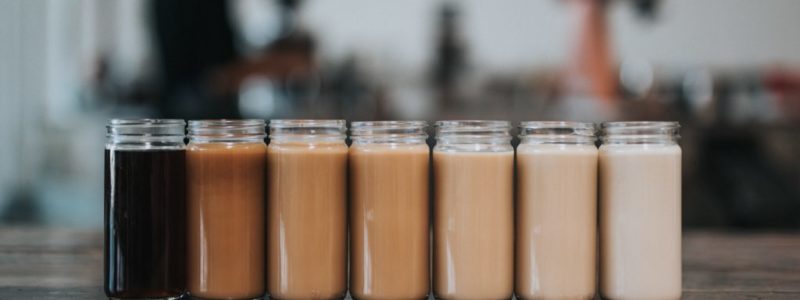
Growing up, Dilpreet experienced colorism as an 8-year-old when her teacher would discourage and dissuade a fairer classmate from hanging out with a darker complexion Dilpreet. She didn’t comprehend it then, but later she realized the truth of the situation.
Kavitha narrated an incident where her friend was rejected by the parents of a disabled boy because her skin was too dark. This incident strengthened Kavitha’s resolve in launching the Dark is Beautiful Campaign in 2009.
Lana Patel grew up in Jamaica in a mixed Afro-Indo family, where a hierarchy based on skin color was apparent. Skin whitening creams were popular, face washes didn’t come without a skin whitening ingredient, and the media was fair-skinned dominant, especially the women.
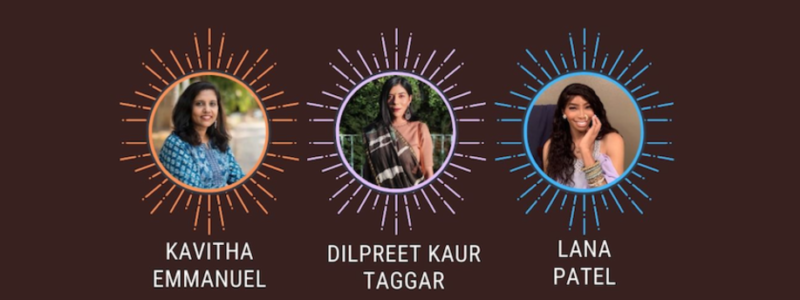
A Conversation About Color
Across three continents, we observed common elements in colorism:
Media and movies are dominated by the fair-skinned population and propagate messaging that ‘light and fair is superior to dark and black’. They show a darker-skinned population doing menial jobs as a housemaid or gardener, the villain usually has a darker complexion, and products are sold using this messaging. Movies like Straight Outta Compton (a Hollywood production house created 4 categories based on skin color to hire female actresses) and Bala (a Bollywood production, which had the female leads’ skin darkened to play the role) have been called out for discriminating based on skin color. The media photoshops dark-skinned celebrities like Gabby Sidibe, Beyonce, Lupita Nyongo, Aishwarya Rai to have lighter skin on front covers of popular magazines.
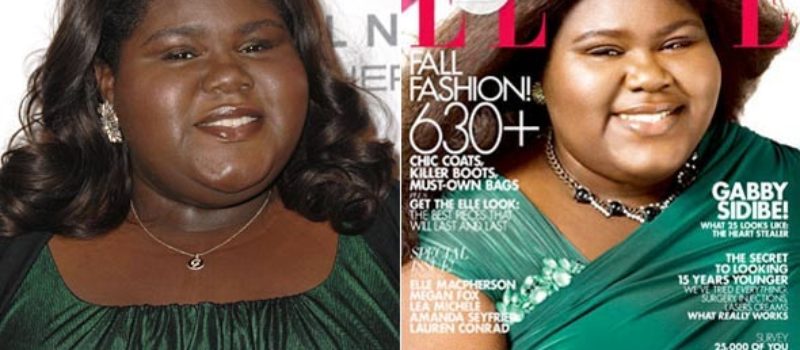
With that being said, skin whitening cream is a huge industry. For example, Fair and Lovely cream, the most popular product in the Indian market, had $500M in sales in 2019. That’s HALF-A-BILLION-DOLLARS!
The external messaging propagates our already formed beliefs. Our beliefs are formed at home where we are taught to discriminate based on skin color. Let me repeat that – Our parents, our teachers, our guardians, our leaders teach us that dark is bad. Phrases such as “Don’t stay out too long in the sun!” or “Mu kala kar diya, ” the literal translation being ‘You made your face black’, with a tone of disgrace and disappointment.
Marriages are based on skin color, roles and responsibilities are distributed based on skin color. During colonialism, darker-skinned slaves were in the fields and the fair-skinned helping indoors. In modern-day slavery, the fair-skinned are seen in client-facing roles while the darker-skinned in the back office.
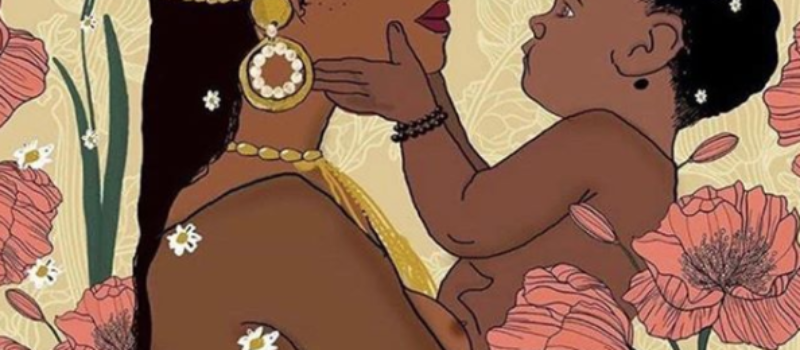
Beauty parlors push skin lightening and whitening to their darker clientele as a must. Essentially, at birth, darker babies are given a doomed outlook on their existence. Life becomes a challenge against this curse.
Recently, after 45 years of profiting from colorism, the mounting outrage sparked by the Black Lives Matter protests challenged corporations like Unilever to take action. Their response: we “want to lead the celebration of a more diverse portrayal of beauty.” How? They’re removing the use of light, lightening, fair, and fairness from their product descriptions and promotion.
Is that enough? No! We, the people, have to shut them down! We have that power through our behaviors and habits. We have that power with where we invest our money. We have that power with where we place our attention on. When the masses put their attention on a product, energy, money, success, and fame follow.
Where Do We Go From Here?
- Panelists suggest to start at home. Start with the self. Pay attention to your real self and understand when you’re prejudiced. Getting to the source of your prejudice and why it exists in your life is the most critical action you can take.
- While working on yourself, you’ll begin to understand how colorism exists in your external life. You’ll notice when your parents are prejudiced against your darker neighbors. You’ll observe the signs and symbols that show us that “Fair is good and Dark is bad.” Call it out when you see it because the majority of the people are not aware of the subtle ways these messages are being propagated throughout society.
- Have conversations about it. Share your stories. Campaign against it. Become an activist, if it resonates with you. Support organizations through your resources. Sing about it, dance about it, write about it, create content about it. Donate to campaigns such as the Dark is Beautiful Campaign. Support brands like Live Tinted, whose founder Deepica Mutyala, has worked tirelessly behind the scenes for darker complexioned women to express themselves, to talk about their identities, about their childhoods, and to support each other through self-discovery.
- Colorism is an unconscious bias that persists until we are aware of it. That’s when we destroy the chains of colorism in our family. Like Dark is Beautiful campaign’s theme states, ’Colorism Ends With Me.’
And this is where we begin to do the work needed to break down this social structure!
Check out our upcoming events below:

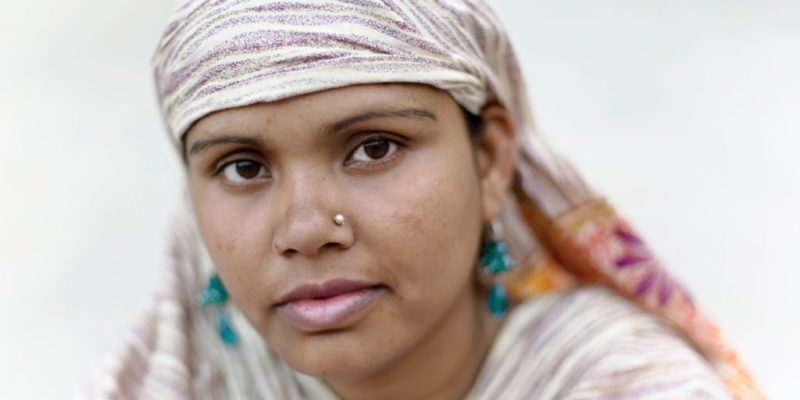
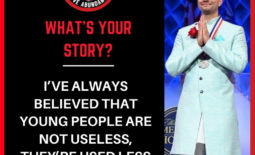





March 13, 2022 @ 9:58 pm
Varun,
I loved this blog piece. Interesting and informative
Thank you for having these conversations
Paula
March 15, 2022 @ 10:13 pm
Thank you Paula!